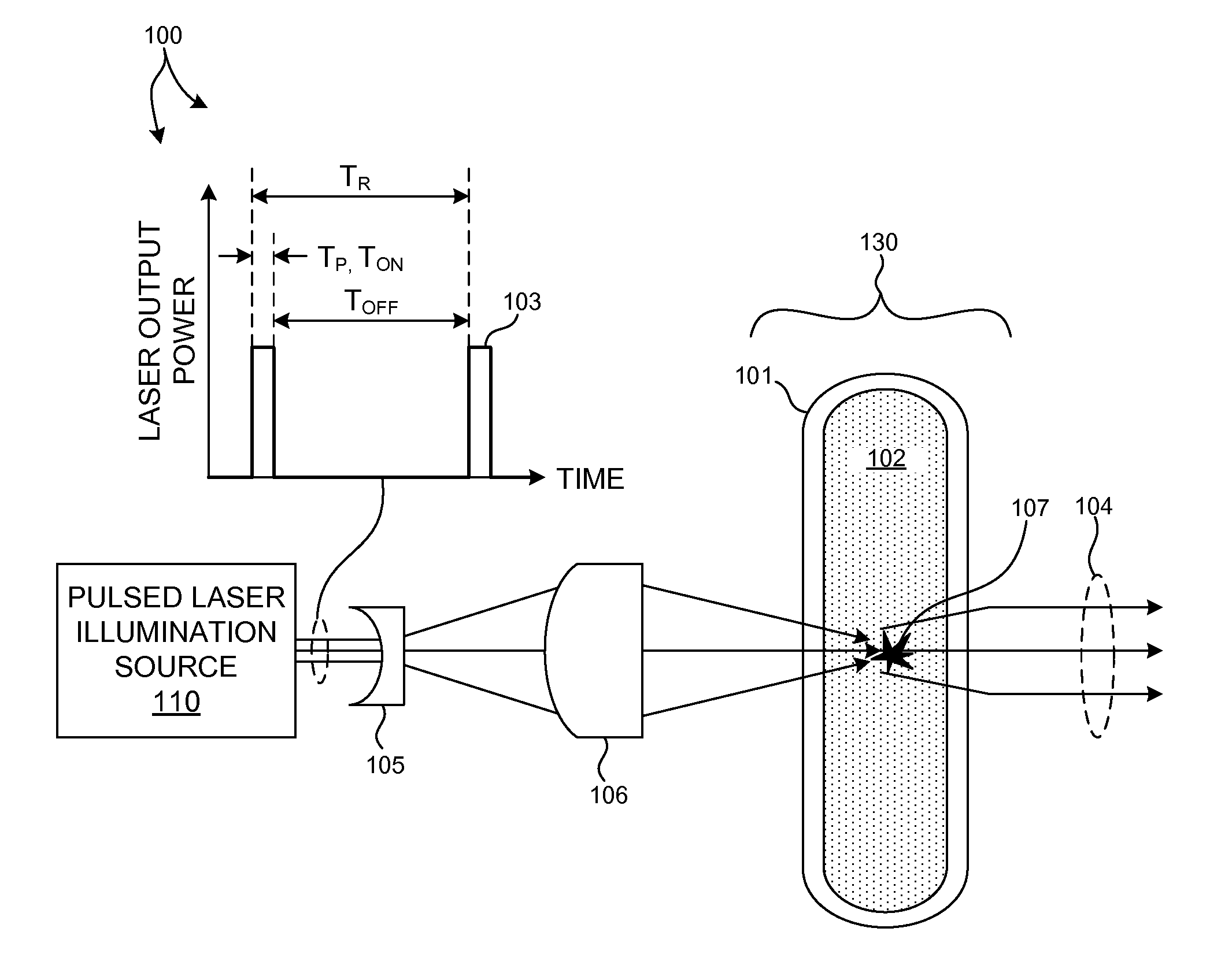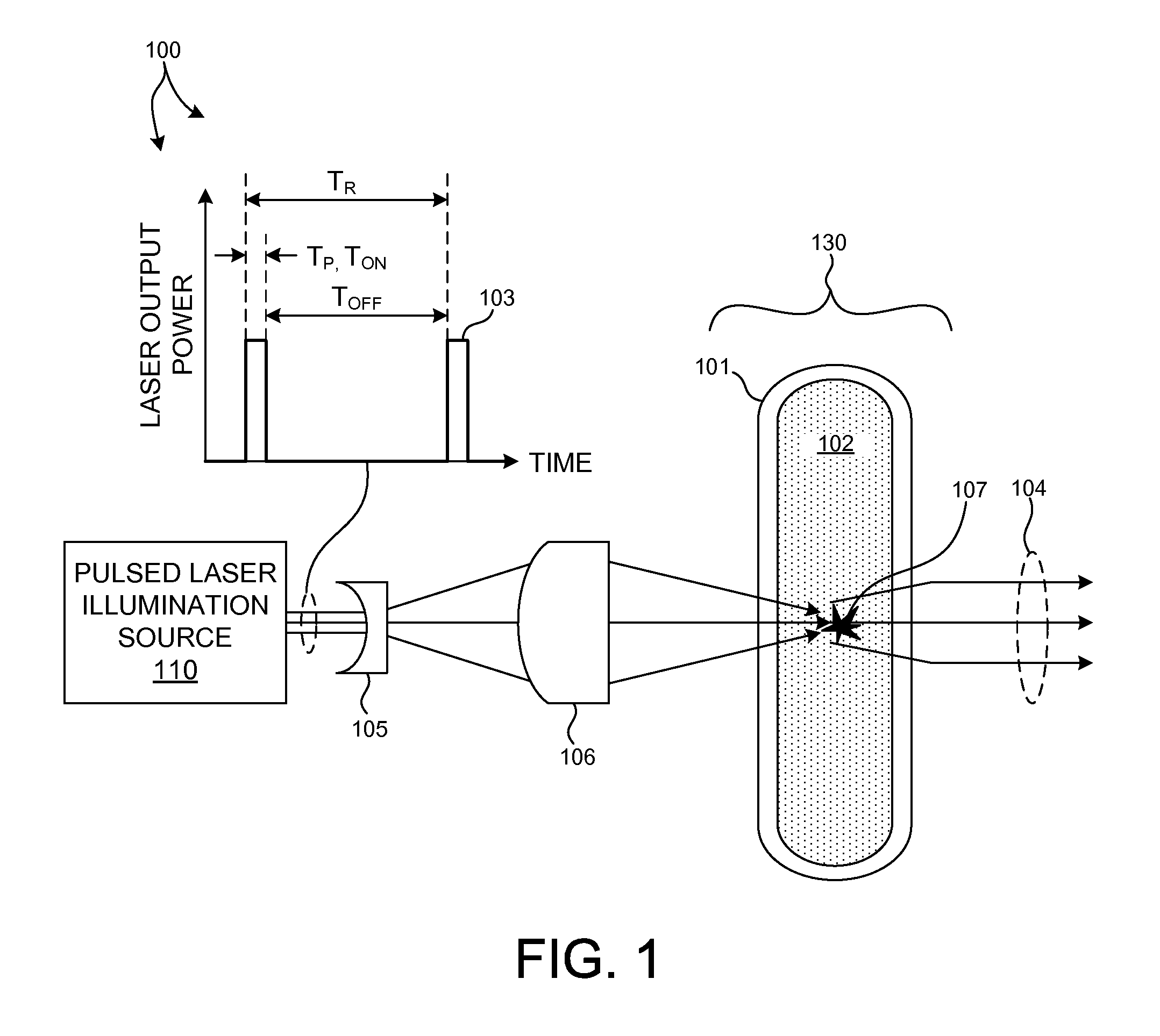Pulsed laser induced plasma light source
- Summary
- Abstract
- Description
- Claims
- Application Information
AI Technical Summary
Benefits of technology
Problems solved by technology
Method used
Image
Examples
Embodiment Construction
[0027]Reference will now be made in detail to background examples and some embodiments of the invention, examples of which are illustrated in the accompanying drawings.
[0028]Methods and systems are described herein for producing high radiance illumination light for use in semiconductor metrology based on repeatedly induced plasma ignition. More specifically, a cold gas is repeatedly ignited by a pulsed laser at a given interval to periodically generate bright plasma. The laser induced plasma light source repeatedly achieves dielectric break-down in a gaseous atmosphere by multi-photon absorption and inverse Bremsstrahlung. A pulse of laser light triggers a break-down event that induces a phase transition from an ordinary state of matter to a plasma state, thus triggering emission of light at high color temperature. After the pulse of laser light, the plasma is extinguished due to a lack of pump energy. This results in a phase transition back to the ordinary state of matter. After th...
PUM
 Login to View More
Login to View More Abstract
Description
Claims
Application Information
 Login to View More
Login to View More - R&D
- Intellectual Property
- Life Sciences
- Materials
- Tech Scout
- Unparalleled Data Quality
- Higher Quality Content
- 60% Fewer Hallucinations
Browse by: Latest US Patents, China's latest patents, Technical Efficacy Thesaurus, Application Domain, Technology Topic, Popular Technical Reports.
© 2025 PatSnap. All rights reserved.Legal|Privacy policy|Modern Slavery Act Transparency Statement|Sitemap|About US| Contact US: help@patsnap.com



